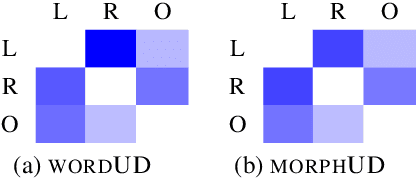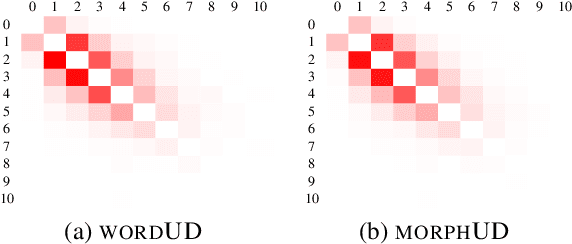KyungTae Lim
KFinEval-Pilot: A Comprehensive Benchmark Suite for Korean Financial Language Understanding
Apr 17, 2025Abstract:We introduce KFinEval-Pilot, a benchmark suite specifically designed to evaluate large language models (LLMs) in the Korean financial domain. Addressing the limitations of existing English-centric benchmarks, KFinEval-Pilot comprises over 1,000 curated questions across three critical areas: financial knowledge, legal reasoning, and financial toxicity. The benchmark is constructed through a semi-automated pipeline that combines GPT-4-generated prompts with expert validation to ensure domain relevance and factual accuracy. We evaluate a range of representative LLMs and observe notable performance differences across models, with trade-offs between task accuracy and output safety across different model families. These results highlight persistent challenges in applying LLMs to high-stakes financial applications, particularly in reasoning and safety. Grounded in real-world financial use cases and aligned with the Korean regulatory and linguistic context, KFinEval-Pilot serves as an early diagnostic tool for developing safer and more reliable financial AI systems.
Enhancing Korean Dependency Parsing with Morphosyntactic Features
Mar 26, 2025Abstract:This paper introduces UniDive for Korean, an integrated framework that bridges Universal Dependencies (UD) and Universal Morphology (UniMorph) to enhance the representation and processing of Korean {morphosyntax}. Korean's rich inflectional morphology and flexible word order pose challenges for existing frameworks, which often treat morphology and syntax separately, leading to inconsistencies in linguistic analysis. UniDive unifies syntactic and morphological annotations by preserving syntactic dependencies while incorporating UniMorph-derived features, improving consistency in annotation. We construct an integrated dataset and apply it to dependency parsing, demonstrating that enriched morphosyntactic features enhance parsing accuracy, particularly in distinguishing grammatical relations influenced by morphology. Our experiments, conducted with both encoder-only and decoder-only models, confirm that explicit morphological information contributes to more accurate syntactic analysis.
VLR-Bench: Multilingual Benchmark Dataset for Vision-Language Retrieval Augmented Generation
Dec 13, 2024



Abstract:We propose the VLR-Bench, a visual question answering (VQA) benchmark for evaluating vision language models (VLMs) based on retrieval augmented generation (RAG). Unlike existing evaluation datasets for external knowledge-based VQA, the proposed VLR-Bench includes five input passages. This allows testing of the ability to determine which passage is useful for answering a given query, a capability lacking in previous research. In this context, we constructed a dataset of 32,000 automatically generated instruction-following examples, which we denote as VLR-IF. This dataset is specifically designed to enhance the RAG capabilities of VLMs by enabling them to learn how to generate appropriate answers based on input passages. We evaluated the validity of the proposed benchmark and training data and verified its performance using the state-of-the-art Llama3-based VLM, the Llava-Llama-3 model. The proposed VLR-Bench and VLR-IF datasets are publicly available online.
K-UD: Revising Korean Universal Dependencies Guidelines
Dec 01, 2024

Abstract:Critique has surfaced concerning the existing linguistic annotation framework for Korean Universal Dependencies (UDs), particularly in relation to syntactic relationships. In this paper, our primary objective is to refine the definition of syntactic dependency of UDs within the context of analyzing the Korean language. Our aim is not only to achieve a consensus within UDs but also to garner agreement beyond the UD framework for analyzing Korean sentences using dependency structure, by establishing a linguistic consensus model.
Unlocking Korean Verbs: A User-Friendly Exploration into the Verb Lexicon
Oct 01, 2024Abstract:The Sejong dictionary dataset offers a valuable resource, providing extensive coverage of morphology, syntax, and semantic representation. This dataset can be utilized to explore linguistic information in greater depth. The labeled linguistic structures within this dataset form the basis for uncovering relationships between words and phrases and their associations with target verbs. This paper introduces a user-friendly web interface designed for the collection and consolidation of verb-related information, with a particular focus on subcategorization frames. Additionally, it outlines our efforts in mapping this information by aligning subcategorization frames with corresponding illustrative sentence examples. Furthermore, we provide a Python library that would simplify syntactic parsing and semantic role labeling. These tools are intended to assist individuals interested in harnessing the Sejong dictionary dataset to develop applications for Korean language processing.
Optimizing Language Augmentation for Multilingual Large Language Models: A Case Study on Korean
Mar 21, 2024Abstract:Large language models (LLMs) use pretraining to predict the subsequent word; however, their expansion requires significant computing resources. Numerous big tech companies and research institutes have developed multilingual LLMs (MLLMs) to meet current demands, overlooking less-resourced languages (LRLs). This study proposed three strategies to enhance the performance of LRLs based on the publicly available MLLMs. First, the MLLM vocabularies of LRLs were expanded to enhance expressiveness. Second, bilingual data were used for pretraining to align the high- and less-resourced languages. Third, a high-quality small-scale instruction dataset was constructed and instruction-tuning was performed to augment the LRL. The experiments employed the Llama2 model and Korean was used as the LRL, which was quantitatively evaluated against other developed LLMs across eight tasks. Furthermore, a qualitative assessment was performed based on human evaluation and GPT4. Experimental results showed that our proposed Bllossom model exhibited superior performance in qualitative analyses compared to previously proposed Korean monolingual models.
K-UniMorph: Korean Universal Morphology and its Feature Schema
May 17, 2023Abstract:We present in this work a new Universal Morphology dataset for Korean. Previously, the Korean language has been underrepresented in the field of morphological paradigms amongst hundreds of diverse world languages. Hence, we propose this Universal Morphological paradigms for the Korean language that preserve its distinct characteristics. For our K-UniMorph dataset, we outline each grammatical criterion in detail for the verbal endings, clarify how to extract inflected forms, and demonstrate how we generate the morphological schemata. This dataset adopts morphological feature schema from Sylak-Glassman et al. (2015) and Sylak-Glassman (2016) for the Korean language as we extract inflected verb forms from the Sejong morphologically analyzed corpus that is one of the largest annotated corpora for Korean. During the data creation, our methodology also includes investigating the correctness of the conversion from the Sejong corpus. Furthermore, we carry out the inflection task using three different Korean word forms: letters, syllables and morphemes. Finally, we discuss and describe future perspectives on Korean morphological paradigms and the dataset.
Korean Named Entity Recognition Based on Language-Specific Features
May 10, 2023Abstract:In the paper, we propose a novel way of improving named entity recognition in the Korean language using its language-specific features. While the field of named entity recognition has been studied extensively in recent years, the mechanism of efficiently recognizing named entities in Korean has hardly been explored. This is because the Korean language has distinct linguistic properties that prevent models from achieving their best performances. Therefore, an annotation scheme for {Korean corpora} by adopting the CoNLL-U format, which decomposes Korean words into morphemes and reduces the ambiguity of named entities in the original segmentation that may contain functional morphemes such as postpositions and particles, is proposed herein. We investigate how the named entity tags are best represented in this morpheme-based scheme and implement an algorithm to convert word-based {and syllable-based Korean corpora} with named entities into the proposed morpheme-based format. Analyses of the results of {statistical and neural} models reveal that the proposed morpheme-based format is feasible, and the {varied} performances of the models under the influence of various additional language-specific features are demonstrated. Extrinsic conditions were also considered to observe the variance of the performances of the proposed models, given different types of data, including the original segmentation and different types of tagging formats.
Yet Another Format of Universal Dependencies for Korean
Sep 20, 2022



Abstract:In this study, we propose a morpheme-based scheme for Korean dependency parsing and adopt the proposed scheme to Universal Dependencies. We present the linguistic rationale that illustrates the motivation and the necessity of adopting the morpheme-based format, and develop scripts that convert between the original format used by Universal Dependencies and the proposed morpheme-based format automatically. The effectiveness of the proposed format for Korean dependency parsing is then testified by both statistical and neural models, including UDPipe and Stanza, with our carefully constructed morpheme-based word embedding for Korean. morphUD outperforms parsing results for all Korean UD treebanks, and we also present detailed error analyses.
 Add to Chrome
Add to Chrome Add to Firefox
Add to Firefox Add to Edge
Add to Edge